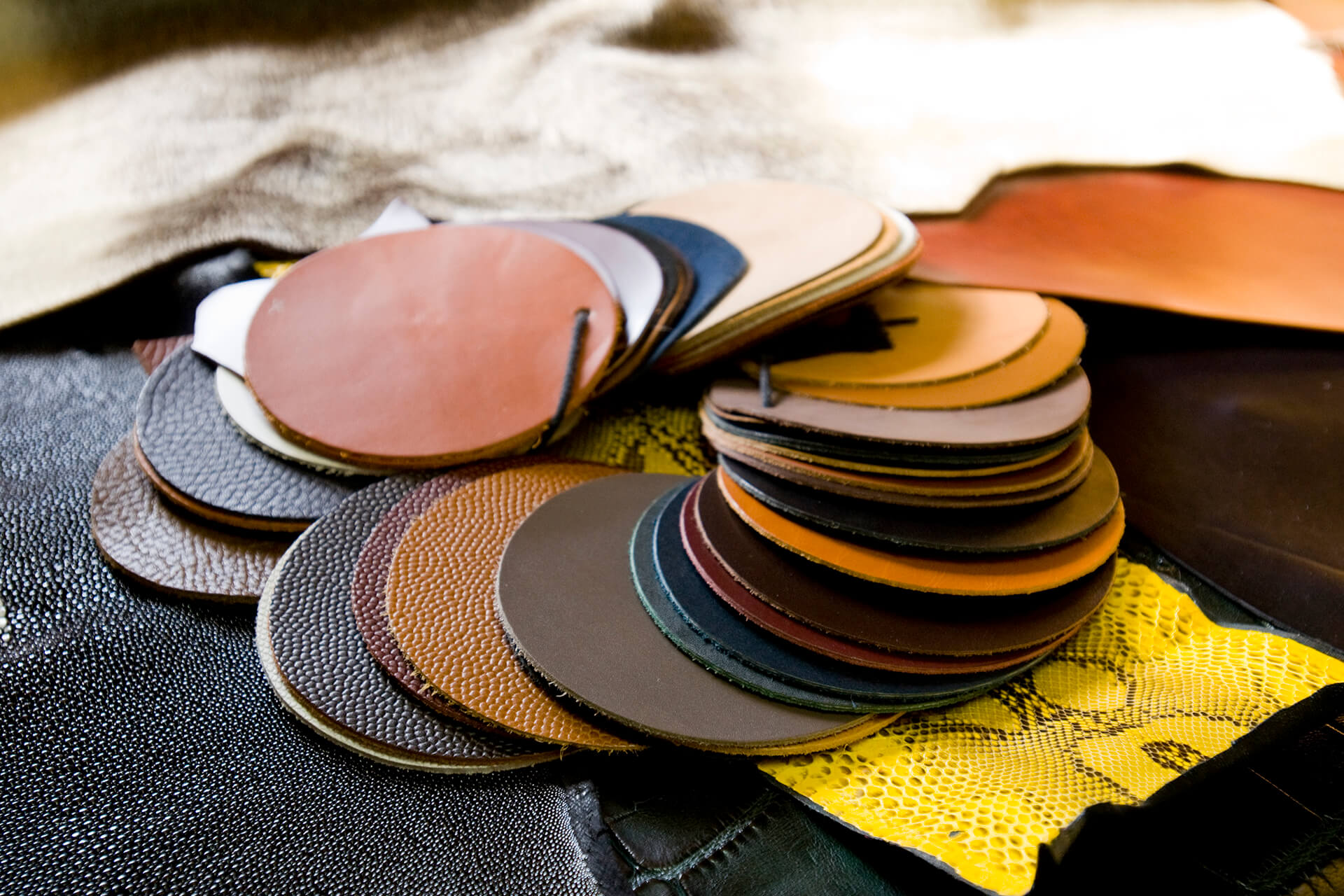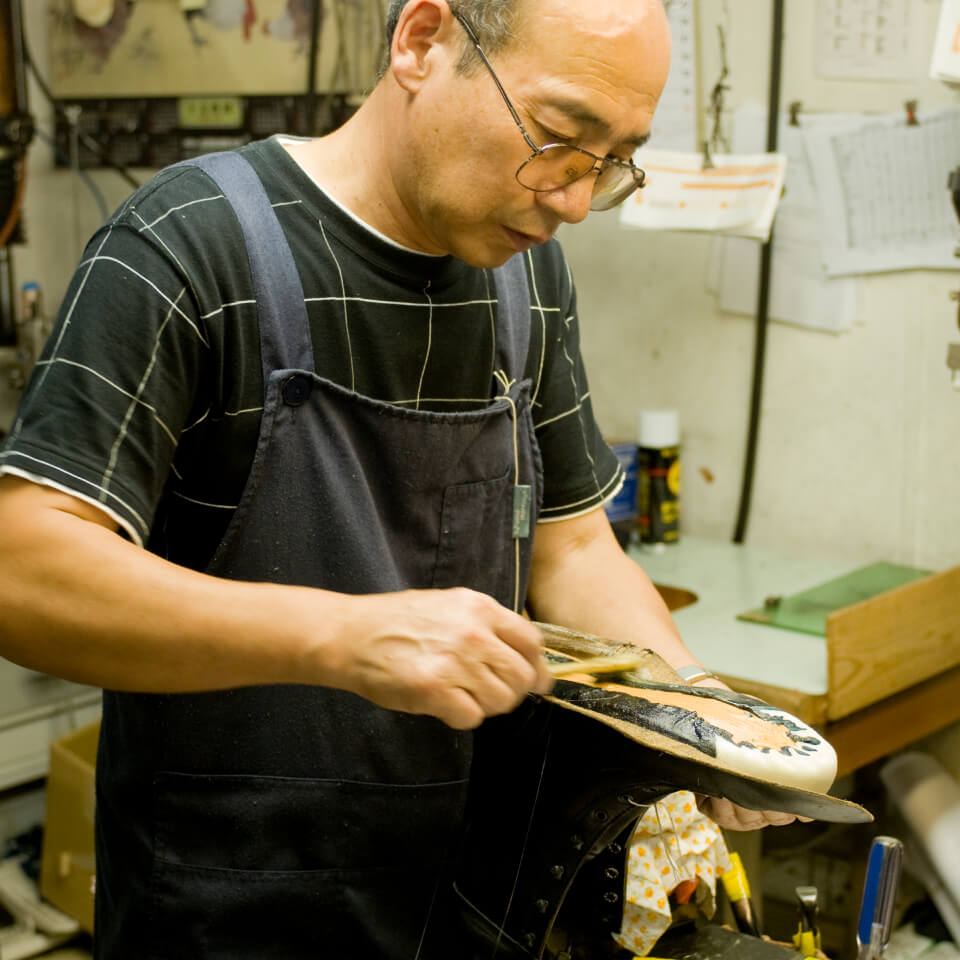
Creative: Miyagi Kogyo
Miyagi Kogyo Co., Ltd:Shoe factory that has been producing shoes using Goodyear welt for over 60 years.

From “Japanese Leather 1st Edition” Published 2008
To choose a pair of shoes. Shoes that are the perfect fit. This "perfect" part should not be taken lightly. Especially with leather shoes, there is a world of difference in comfort.
"It's just shoes, but it’s still important, isn’t it?"
Says Kazuyoshi Takahashi, president of Miyagi Kogyo.
In Japan, there was a time when it was at the forefront of fashion to refer to Western culture and its trends. Leather shoes would be one of them. Originally, Japanese people did not have a habit of wearing shoes. The purpose of leather shoes was not clear to people even when they began to walk on hard paved roads such as stone and concrete instead of softer soil.
"When I look at the sales floor, there is only a length display, and it says “foot width 2E-4E". Sellers just assume that all Japanese people have a high, wide instep. But actually, each person has a different shape of foot. When I think about buying shoes in England or Italy, there are dozens of sizes available for each product. Customers understand the importance of size. No matter how good the shoe is, it doesn't make sense to buy it if it doesn't fit your foot properly. But in Japan, you can't stock that much size variation with the same product, because there is a risk. "
Leather shoes have the characteristic that the more you wear them, the more they break in and become more fitting to your feet. Miyagi Kogyo, which has a factory in Yamagata, announced 35 different sizes for one design, in order to have customers find shoes that are "perfect" for your feet.
After that, they announced their custom-made system. This is almost unheard of for a productive shoe factory such as Miyagi Kogyo, which lots usually run in the hundreds.

"We take orders from very small lots of about 5 pairs, and not only for our original designs, but also as an OEM. Leather shoe production is highly specialized in each process, and the number of factories that can do everything is very limited. We make it possible to do all of the processes at our own factory. That's why we can handle even one pair. It's difficult, but it can't be done by people who think "it's just shoes", so it’s our job to make it happen. "
By extension, President Takahashi says he wants to convey how incredible leather is to as many people as possible.
"There aren’t many people in Japan who talk about the brilliance of leather. It's not in our culture historically. So I hope the shoes we make convey that. That leather is a great material."
What is the appeal of leather? President Takahashi says that leather grows day by day.
"Leather shoes need care, but it’s not to make them last longer. You’re nurturing the leather. Nurturing it to fit your feet and make it your own. As a result, the shoes become more and more comfortable, and not only the appearance but also the way of you walk changes, and your posture becomes better. You can't experience this with other materials."
There was a time when you could practically sell anything. But now it's different. Before, if you copied British and Italian shoes that were hard to come by, it sold. But now it's easy to get the real thing. If you continue to just copy what others are doing, you’ll eventually get stuck.
"We need to show people how great ‘Made in Miyagi, Japan’ shoes are. We will continue to search for ways to do that. Goodyear may not be eternal. Maybe even leather. Maybe not. We have to think more seriously about shoes. They’re not just shoes."
To understand the shoes. This may be important not only for the creator but also for the wearer.

When divided, shoe making has more than 200 processes. Knowing the process, if not all, should change the way you think about shoes.

1: Make a wooden last
We cut the wood according to the plan and design. Depending on the order, the shoe last will be filed in millimeters according to the size of the wearer. Everything about shoe making begins here.

2: Create paper mold
Tape the wooden mold without any gaps and create the paper mold. The task of copying the curves of the upper and heel from a solid to a flat surface is more difficult than it looks.

3: Cutting
Cut the leather based on the dimensions from the paper mold. No two pieces of leather are the same, since it is a natural material. You must determine which portion to use for which part of the shoe.

4: Sewing
Sew the die-cut leather together. From 2D to 3D again. Mold the shoe into the three dimensional form, being careful of the lasting portion.

5: Counter
Shape the heel. Similarly, put a core in the toe part so that the shape is maintained.

6: Lasting
Temporarily pin sewn and well-shaped upper onto the last. Stretch the leather over the last to make sure it fits tightly so that there is no looseness in the finish.

7: Chainstiching
Sew the upper to the ribs on the insole. This is a particularly important process in the Goodyear manufacturing method, where the seams are not exposed.

8: Outsewing
Sew the sole to the chainsticked welt. Cushion materials such as cork are inserted here.

9: Edge grinding
Finish the edge of the sole with a high-speed rotating blade. This is work that relies on the intuition of craftsmen, not the machines.

10: Finishing
Touches
Apply a heat trowel, apply ink, and polish. The finish not only requires skill, but also good taste.

Complete!
Carefully check the finished product and complete.